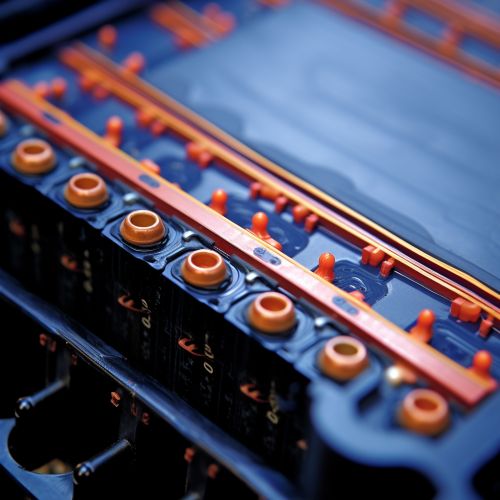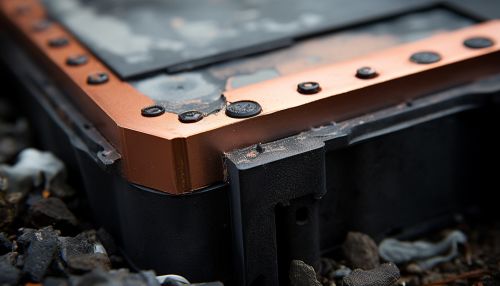Lead–acid battery
Introduction
The Lead–acid battery is a type of rechargeable battery that uses a lead dioxide cathode, a sponge lead anode, and an electrolyte of sulfuric acid. It was invented by French physicist Gaston Planté in 1859 and is the oldest type of rechargeable battery still in use today.
History
The lead-acid battery was first developed by Gaston Planté in 1859. Planté's battery was a simple device, consisting of two lead plates rolled into a spiral and immersed in a sulfuric acid solution. Despite its simplicity, the battery was capable of delivering a high surge current, making it suitable for the early telegraph and telephone systems.
Design and Operation
A lead-acid battery consists of a series of cells, each containing a positive electrode made of lead dioxide and a negative electrode of sponge lead. These electrodes are immersed in an electrolyte of sulfuric acid. When the battery is discharged, the lead dioxide and sponge lead react with the sulfuric acid to produce lead sulfate and water, releasing electrical energy in the process. When the battery is recharged, the lead sulfate and water are converted back into lead dioxide, sponge lead, and sulfuric acid.
Types of Lead-Acid Batteries
There are several types of lead-acid batteries, each designed for specific applications. These include the flooded (or wet) cell, the valve-regulated lead-acid (VRLA) battery, and the absorbed glass mat (AGM) battery.
Flooded Cell
The flooded cell is the most common type of lead-acid battery. It is inexpensive to manufacture and has a high energy-to-weight ratio. However, it requires regular maintenance to ensure that the electrolyte level remains above the plates.
Valve-Regulated Lead-Acid (VRLA) Battery
The VRLA battery is a type of sealed lead-acid battery that uses a pressure relief valve to prevent the buildup of excess pressure. It is maintenance-free and has a longer shelf life than the flooded cell. However, it is more expensive to manufacture and has a lower energy-to-weight ratio.
Absorbed Glass Mat (AGM) Battery
The AGM battery is a type of VRLA battery that uses a fiberglass separator to hold the electrolyte in place. It is highly resistant to vibration and shock, making it ideal for use in vehicles and portable devices. However, it is more expensive than both the flooded cell and the VRLA battery.
Applications
Lead-acid batteries are used in a wide range of applications, from automotive starter batteries to backup power supplies for computer systems. They are also used in electric vehicles, submarines, and off-grid power systems.
Environmental Impact
The production and disposal of lead-acid batteries can have significant environmental impacts. Lead is a toxic heavy metal that can contaminate soil and water, posing a risk to human health and the environment. However, lead-acid batteries are highly recyclable, and many countries have established recycling programs to recover the lead and other valuable materials.
Future Developments
While the lead-acid battery is a mature technology, there are ongoing efforts to improve its performance and reduce its environmental impact. These include the development of advanced lead-acid batteries with higher energy densities and longer cycle lives, as well as the exploration of alternative materials and designs.
See Also


